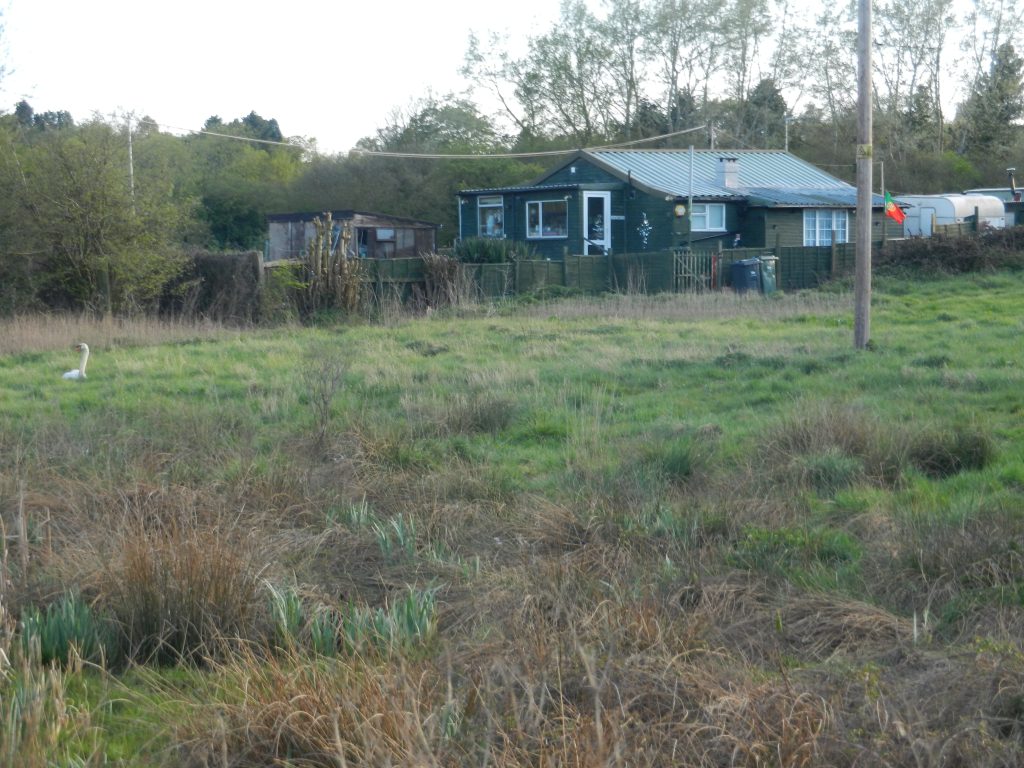
As mentioned earlier in the week there is what I call a ‘hutment colony’, although now mostly caravans, near Camp House (s.p.b.s) beside the River Severn. The photo shows one substantial hutment. Hutment ‘colonies’ often developed after the Great War in the 1920s, sometimes earlier, in an age before strict planning regulations came into force. Such colonies might ‘evolve on farm or local authority land and comprised a motly collection of ‘self builds’ although ex-railway carriages were also popular, each compartment serving as a separate room. In Winifred Holtby’s novel, based on the south-Holderness area, the ‘Shacks’ were just such a colony although there a collection of homes, second-homes and holiday homes, the residents and tenants generally accepted by the wider community. The idea was to live in the countryside without all the constraints and responsibilities of ‘normal’ domestic life.
It was also a time when gypsies were still gypsies and tramps were tramps, before standardisation and conformity enveloped all. In some respects such a time represented a truer respect for personal freedom – although in the novel Nancy Mitchell felt humiliated at the Shacks and yearned for a proper house.
The site was probably just above the flood waters of Feb. 2019 (s.p.b.s).
In south-west Norfolk back in the 1960s there was a small ‘colony’ between West Dereham and Denver that I passed when cycling to school sports matches in Downham Market, also in Boughton there were two old railway carriages in the corner of a field – all now long-gone.